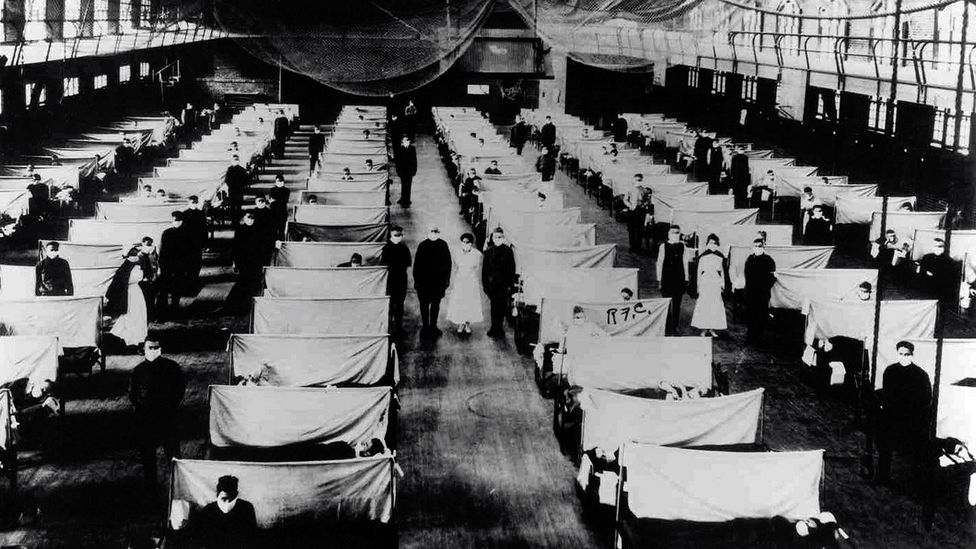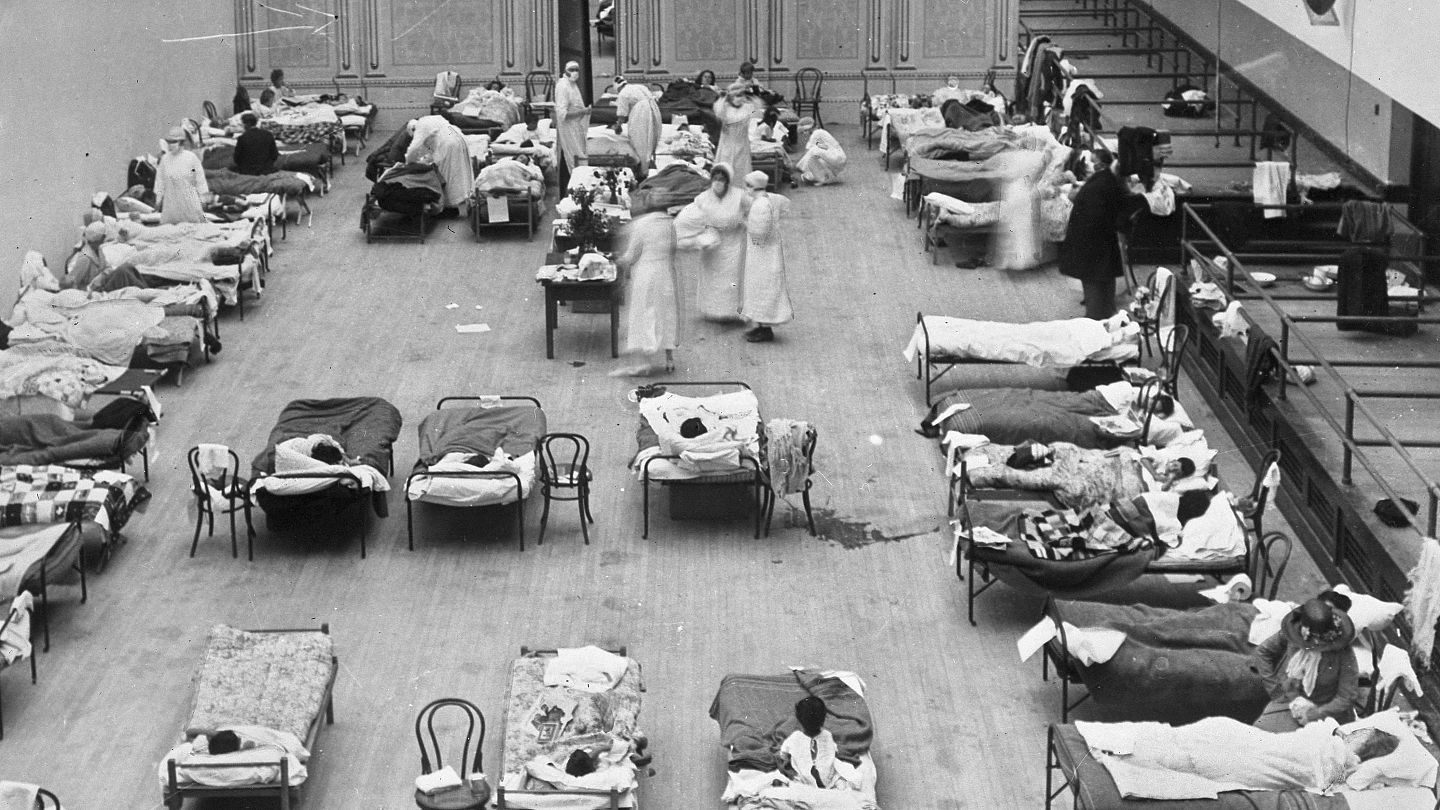Spanish Flu | An estimated 500 million people were infected during this pandemic. The origin of the 1918 spanish flu is hard to pin down. The pandemic is conservatively estimated to have killed about 50. History of 1918 flu pandemic. As a result, many harbor misconceptions about it. In struck in the final year of the first world war and spread across the world killing. The grim reaper by louis raemaekers. The spanish flu killed tens of millions of people. Spanish flu, or more accurately the 1918 influenza pandemic, is one of the deadliest natural disasters in human history. The 1918 spanish flu pandemic has been a regular subject of speculation over the last century. What if, instead, the killer infection was neither the flu nor spanish in origin? Reports from fort riley on march 4, 1918 the earliest reports associated with the spanish flu state that patients complained of body aches. In the fall of 1918 the great war in europe was winding down and. In struck in the final year of the first world war and spread across the world killing. The 1918 spanish flu pandemic has been a regular subject of speculation over the last century. The spanish flu pandemic, also known as la grippe espagnole, or la pesadilla, was an unusually severe and deadly strain of avian influenza, a viral infectious disease, that killed some 50 million to. Spanish flu was one of the deadliest pandemics in human history, and in recent weeks, it has been used as something of a measuring stick when assessing the ongoing impact of coronavirus. Spanish flu — span·ish flu span ish n influenza that is caused by a subtype (h1n1) of the orthomyxovirus causing influenza a and that was responsible for about 500,000 deaths in the u.s. Understandably there was panic worldwide, as influenza was not discovered until 1933, so the mystery was rather frightening. As a result, many harbor misconceptions about it. The spanish flu's mortality rate is estimated to have been between 10% and 20%, while the the spanish flu was also marked by its extremely high infection rate of up to 50%, and its unusual. The grim reaper by louis raemaekers. The spanish flu killed tens of millions of people. Everything you need to know about the flu illness, including symptoms, treatment and prevention. The spanish flu continued to appear, mutating and acquiring genetic material from other viruses. during the spanish flu pandemic, social fear varied according to the degree of information available. The grim reaper by louis raemaekers. Otis historical archives, national museum of health and medicine). Read about the 1918 influenza pandemic and progress made in. Reports from fort riley on march 4, 1918 the earliest reports associated with the spanish flu state that patients complained of body aches. Everything you need to know about the flu illness, including symptoms, treatment and prevention. Understandably there was panic worldwide, as influenza was not discovered until 1933, so the mystery was rather frightening. Soon dubbed 'spanish flu' after its effects were reported in the country's newspapers, the virus rapidly spread across much of the globe to become one of the worst natural disasters in human history. It was called the spanish flu because the first human case was identified there. Us vaccines caused 'spanish flu'. The grim reaper by louis raemaekers. An estimated 500 million people were infected during this pandemic. The spanish flu killed tens of millions of people. The 1918 spanish flu pandemic has been a regular subject of speculation over the last century. The spanish flu's mortality rate is estimated to have been between 10% and 20%, while the the spanish flu was also marked by its extremely high infection rate of up to 50%, and its unusual. What if, instead, the killer infection was neither the flu nor spanish in origin? In struck in the final year of the first world war and spread across the world killing. The spanish flu's mortality rate is estimated to have been between 10% and 20%, while the the spanish flu was also marked by its extremely high infection rate of up to 50%, and its unusual. Otis historical archives, national museum of health and medicine). It was called the spanish flu because the first human case was identified there. What if, instead, the killer infection was neither the flu nor spanish in origin? When the flu rampaged through spain, the spanish government publicly announced the epidemic. Spanish flu is a deadly disease that has claimed tens of millions of lives worldwide in 1918 so the pandemic is dubbed the mother of all pandemics . The pandemic is conservatively estimated to have killed about 50. Spanish flu — span·ish flu span ish n influenza that is caused by a subtype (h1n1) of the orthomyxovirus causing influenza a and that was responsible for about 500,000 deaths in the u.s. Understandably there was panic worldwide, as influenza was not discovered until 1933, so the mystery was rather frightening. The spanish flu, also known as the 1918 influenza pandemic, was an unusually deadly influenza pandemic caused by the h1n1 influenza a virus. Everything you need to know about the flu illness, including symptoms, treatment and prevention. The spanish flu's mortality rate is estimated to have been between 10% and 20%, while the the spanish flu was also marked by its extremely high infection rate of up to 50%, and its unusual. Soon dubbed 'spanish flu' after its effects were reported in the country's newspapers, the virus rapidly spread across much of the globe to become one of the worst natural disasters in human history. Spanish flu, or more accurately the 1918 influenza pandemic, is one of the deadliest natural disasters in human history. History of 1918 flu pandemic. Read about the 1918 influenza pandemic and progress made in. In mice, the h1n1 spanish flu is extremely virulent, generating 39,000 times more virus particles frustratingly, it is still not known where and when the spanish flu acquired its avian genes and first. Us vaccines caused 'spanish flu'./cdn.vox-cdn.com/uploads/chorus_image/image/66529941/_worker_photo_toned.0.jpg)


Spanish Flu: Reports from fort riley on march 4, 1918 the earliest reports associated with the spanish flu state that patients complained of body aches.

0 comments:
Post a Comment